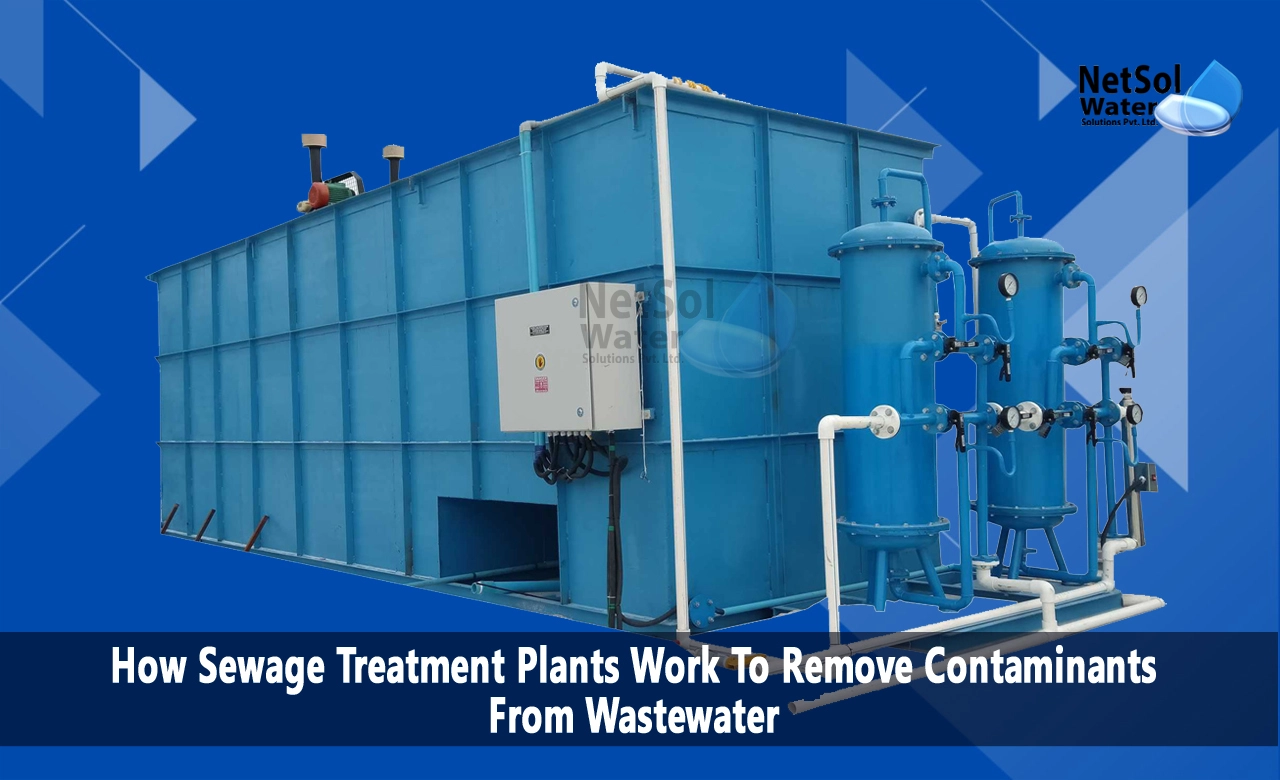How STP Plants Work To Remove Contaminants From Wastewater?
Wastewater treatment is a vital public service that most people take for granted. Yet functioning sewage systems are critical for protecting public health and the environment in our communities. This blog will examine the step-by-step process of how sewage treatment plants work to remove contaminants from wastewater before it is released back into the environment. It will also discuss the importance of proper wastewater management and highlight innovations that are making treatment methods even more effective.
How Sewage Gets to the Treatment Plant?
When you flush the toilet, shower, or wash dishes, that wastewater has to go somewhere. In most communities, it travels through underground sewer pipes to a wastewater treatment plant. Along the way, the wastewater collects all sorts of contaminants from homes and businesses, including:
1- Human waste (feces and urine)
2- Food scraps and oils
3- Soaps and detergents
4- Microplastics from clothing fibers
5- Toxic chemicals and heavy metals
6- Excess nutrients like nitrogen and phosphorus
By the time the wastewater reaches the treatment plant, it has accumulated high levels of pollutants. Properly treating and removing these contaminants is crucial before the water can be reused or released back into the environment.
The Step-by-Step Wastewater Treatment Process
Sewage treatment plants use a multi-stage process to remove solids, filter out pollutants, and make the water safe again. Here are the key steps:
1. Preliminary Treatment - Screens and filters are used to remove large debris like rags, plastics, and grit. Sand and gravel settle out in holding tanks.
2. Primary Treatment - Wastewater flows into large settling tanks where solids sink to the bottom and greases float to the top. The solids are scraped off the bottom and the grease skimmed off the surface.
3. Secondary Treatment - Biological processes are used to remove dissolved organic matter. Bacteria break down pollutants for food and reproduction. Common methods include activated sludge, trickling filters, and rotating biological contactors.
4. Tertiary Treatment - Advanced methods like filtration, chlorination, and nutrient removal are used to further polish the effluent water quality before discharge.
5. Disinfection - Chlorine, ultraviolet light, or ozone is used to kill remaining bacteria and pathogens before releasing the treated water.
6. Biosolids Handling - Solids removed during primary and secondary treatment must undergo additional stabilization, before reuse as fertilizer, landfill disposal, or incineration.
7. Discharge/Reuse - The clean treated water is discharged into streams, used for irrigation, or recharged into groundwater.
Importance of Proper Sewage Treatment
Without proper wastewater management, human sewage would pollute our drinking water sources, rivers, lakes and oceans. That was the case historically, before wastewater treatment became standard practice. Raw sewage spreads diseases including typhoid, cholera, dysentery, and hepatitis. Treatment plants prevent those health risks.
Well-operated facilities also protect the environment. Removing excess nutrients like nitrogen and phosphorus prevents algae blooms and low-oxygen dead zones in receiving waters. Toxic pollutants are filtered out instead of entering the food chain. Treatment decreases environmental impacts.
Treatment Innovations and Challenges
Engineers are continually developing better solutions for managing wastewater and its byproducts. Some innovations include:
1- Improved filtration methods, like membrane bioreactors
2- UV disinfection instead of chlorine
3- Methane capture and energy generation from biosolids
4- Integrated resource recovery of nutrients, clean water, and renewable energy
However, many treatment plants, especially in developing countries, struggle with proper maintenance and capacity. Aging infrastructure in industrialized nations also requires extensive upgrades to keep pace with modern water quality regulations. Plant operators face challenges of tight budgets, more stringent discharge limits, and increasing maintenance needs.
The Bottom Line
Modern society depends on properly functioning sewage treatment plants to maintain clean water supplies and healthy communities. Although often overlooked, wastewater management via sewage treatment protects public health, preserves freshwater resources, and enables economic growth. Investment in adequate infrastructure and regular upkeep of these vital facilities is crucial to maximize their pollution-control benefits. We all gain when wastewater is well managed from our homes to the treatment plant.
Do you need an advice or assistance on selecting the best water and waste water treatment unit? We have solutions for all your problems!
Let us know your problem, our experts will make sure that it goes away.
For an assistance or related query,
Call on +91-965-060-8473 Or write us at enquiry@netsolwater.com



